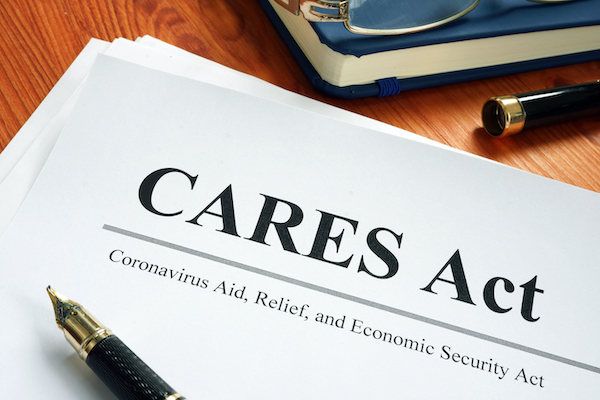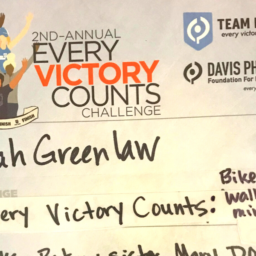On March 27, the President signed into law the Coronavirus Aid, Relief and Economic Security (CARES) Act to help combat the far-reaching impacts of COVID-19. The bill provides increased tax incentives for charitable giving for both individuals and corporations, signifying an intent to stimulate philanthropy.
This provides an excellent opportunity to support the Davis Phinney Foundation. With your support, you help us sustain our work through the pandemic while ensuring our resources that support so many in managing their Parkinson’s continue uninterrupted. And remember, always consult your financial advisor or tax professional to understand how the following provisions may impact your charitable contributions in the 2020 tax year.
If you itemize deductions…
The adjusted gross income (AGI) limit for cash contributions was increased for individual donors. For cash contributions made in 2020, you can now elect to deduct up to 100 percent of your AGI (increased from 60 percent).
If you don’t itemize deductions…
The CARES Act allows for an additional “above-the-line” deduction for charitable gifts made in cash of up to $300. If you’re not itemizing on your 2020 taxes, you can make a donation of $300 and claim this new deduction.
Are you interested in corporate giving?
The AGI limit for cash contributions was also increased for corporate donors. Corporations can now deduct up to 25 percent of taxable income (increased from 10 percent).
Wondering about your Giving Account or Donor Advised Fund?
Both of these new incentives apply only to cash contributions to public charities and do not apply to contributions to supporting organizations or public charities that sponsor donor-advised funds. However, there have been no changes to existing deductions for contributions made into a donor-advised fund. This means you are still able to deduct up to 60 percent AGI in cash and up to 30 percent AGI in appreciated assets contributed to a donor-advised fund.
Existing carry-over rules still apply; so, if your donations in 2020 exceed your AGI deduction limits, you may carry forward excess deductions for up to five subsequent tax years. As always, consult with your tax and legal advisors when considering charitable giving.
What about IRA Qualified Charitable Distributions (QCD)?
The CARES Act did not change the rules around the QCD, which allows individuals over 70½ years old to donate up to $100,000 in IRA assets directly to charity annually, without taking the distribution into taxable income. (Note: Sponsoring organizations with donor-advised fund programs are not qualifying charities for QCDs.)
However, remember that under the CARES Act an individual can elect to deduct 100 percent of their AGI for cash charitable contributions. This effectively affords individuals over 59½ years old the benefits similar to a QCD; they can take a cash distribution from their IRA, contribute the cash to a charity like the Davis Phinney Foundation, and may completely offset tax attributable to the distribution by taking a charitable deduction in an amount up to 100 percent of their AGI for the tax year.
If you’re planning a large donation in 2020, this may be a smart strategy as long as you are between the ages of 59½ and 70½ and are not dependent on existing retirement funds.
Through a new partnership between the Davis Phinney Foundation and FreeWill, you can easily make a QCD gift to Foundation, request a tax acknowledgement letter for a gift already made, or learn more about QCDs here.
Can You Make a Gift to the Davis Phinney Foundation Today?
Make a gift today and take advantage of these 2020 tax benefits. Please contact Claire Herritz at cherritz@dpf.org if you have any questions about donating to the Foundation. To learn more about the Foundation’s partnership with FreeWill, a free resource to help you write or update your legal will in 20 minutes, click here. For information about how to use FreeWill to learn more about or to make Qualified Charitable Distributions, click here.

















